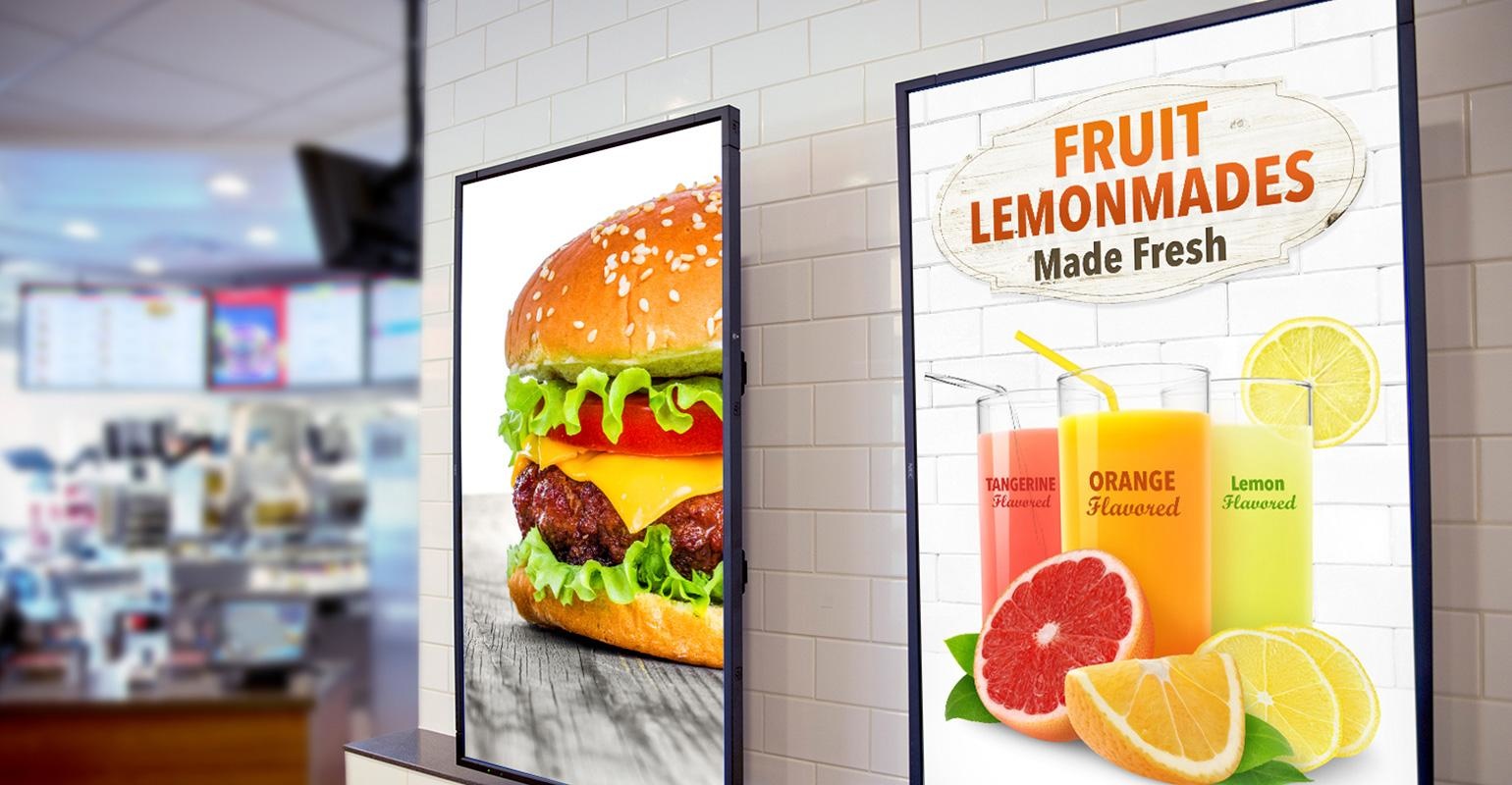Revolutionizing the Dining Experience: The Rise of Digital Signage in Restaurant Menu Display Screens
This insightful article explores the revolutionary shift in the restaurant industry brought about by digital signage. It highlights how digital menu display screens are changing the way restaurants engage with customers, offering enhanced visuals, interactive experiences, and streamlined operations.
Author
EZ-AD TVRevolutionizing the Dining Experience: The Rise of Digital Signage in Restaurant Menu Display Screens
Introduction
The dining experience in the modern era has been transformed significantly by advancements in technology, particularly in how restaurants present their menus and interact with customers.
A notable change can be observed in leading fast-food chains like McDonald's, Burger King, or Taco Bell, where traditional menu boards have been replaced by dynamic, digital displays known as restaurant menu display screens.
These are not just high-tech screens; they embody the innovative use of digital signage technology specifically tailored for restaurant menu display screens. In this detailed exploration, we'll dive into the nuances of digital signage, how it's reshaping restaurant menu display screens in the restaurant sector, and why it stands out as a superior alternative to conventional computer-connected displays.
Understanding Digital Signage in the Context of Restaurant Menu Display Screens
Digital signage, in the realm of the restaurant industry, involves the strategic use of electronic screens for displaying menus and other related content. These screens are controlled by specialized digital players, which provide a platform for displaying dynamic, visually engaging content.
Unlike static, printed menus or basic digital displays connected to a computer, these displays offer a level of flexibility and interaction that significantly enhances the customer's dining experience.
These systems used in restaurants go beyond mere aesthetic appeal. They enable real-time updates of menu items, prices, and special promotions on restaurant menu display screens, ensuring that the information presented is always current and relevant. The ability to swiftly modify content in response to stock availability, promotional activities, or even time-of-day specific menus showcases the adaptability and efficiency of this technology.
Advantages of Digital Signage over Traditional Computer-Connected Displays
Simplified Content Management: One of the most striking benefits of using these digital players in restaurant menu display screens is streamlined content management. These systems allow for remote, instant updating of menus and promotional materials, eliminating the need for manual revisions or reprinting that is often associated with traditional methods.
Hardware Efficiency and Performance: In comparison to standard computer setups, digital signage players are far more efficient. Traditional computer systems often involve cumbersome setups with extensive cabling, limited connectivity options, and the potential for performance lags, particularly in multi-screen arrangements.
These players, on the other hand, are compact, designed for high performance, and tailored to support multiple screens seamlessly, making them a more practical choice for the restaurant environment.
Superior Visual Quality: The screens used in digital signage for restaurant menu display screens are engineered to deliver high-definition visuals with vibrant colors and crisp details.
This level of visual quality is vital in attracting and engaging customers, influencing their dining choices more effectively than the often less impressive visuals of computer-connected displays.
Flexibility and Scalability: As your restaurant grows and evolves, so too can your digital signage system. These solutions are inherently scalable, allowing for the easy addition of more restaurant menu display screens or the integration of new features such as interactive touchscreens or customer ordering interfaces. In contrast, scaling up a computer-based system often requires extensive hardware upgrades or even complete system overhauls.
Durability and Reliability for Continuous Operation: The digital players used in the store, are built for continuous, long-term operation, an essential requirement in the bustling atmosphere of a restaurant. Computers, which are not typically designed for this kind of extensive use, may face challenges like overheating or quicker wear and tear under similar conditions.
Interactive Customer Experience: Advanced digital signage systems in restaurants sometimes offer interactive capabilities, such as self-service ordering or entertainment options while waiting. These interactive elements enhance the customer experience in ways that traditional computer displays simply cannot match.
Conclusion
The transition to digital signage is not just a fleeting trend but a significant evolution in the restaurant industry. This technology is reshaping the way restaurants communicate with their customers, offering a blend of efficiency, aesthetic appeal, and customer engagement that older methods cannot rival.
As digital signage technology continues to advance, its role in enhancing the customer experience and streamlining restaurant operations becomes more pronounced.
For restaurateurs looking to stay ahead in a competitive market, investing in these solutions for their restaurant menu display screens is not just an upgrade – it's a step into the future of the dining experience.



